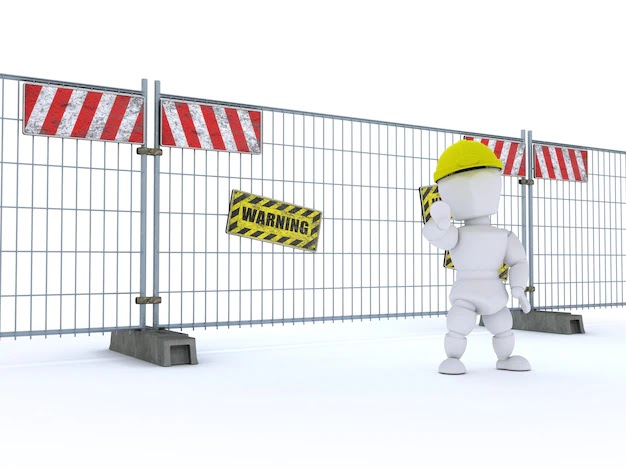The Power of To-Do Lists
I. The Psychology Behind To-Do Lists
The effectiveness of to-do lists isn’t just a matter of organization; it’s also rooted in psychology. When you write down your tasks, you’re engaging in a process called "externalization." This involves taking your thoughts and mental tasks and transferring them onto paper (or a digital platform). This process frees up mental space, reduces cognitive load, and allows your brain to focus more effectively on completing the tasks rather than just remembering them.
1. The Zeigarnik Effect: One of the key psychological principles behind the power of to-do lists is the Zeigarnik Effect. Named after psychologist Bluma Zeigarnik, this phenomenon describes the tendency of people to remember uncompleted or interrupted tasks better than completed ones. By writing down your tasks, you acknowledge them and create a plan to complete them, which can reduce the mental tension and anxiety associated with incomplete tasks.
2. Sense of Accomplishment: Another psychological benefit of to-do lists is the sense of accomplishment you feel when you check off completed tasks. This act releases dopamine, a neurotransmitter associated with pleasure and reward, which can motivate you to continue working through your list. The more tasks you complete, the more motivated you become, creating a positive feedback loop that boosts your overall productivity.
II. Why To-Do Lists Work
To-do lists are effective because they provide structure, clarity, and motivation. Here’s how they work:
1. Organization and Structure: A to-do list helps you organize your tasks in a logical order, giving you a clear overview of what needs to be done. This structure allows you to break down large projects into smaller, manageable tasks, making it easier to tackle complex responsibilities. By organizing your tasks, you can also prioritize them based on importance and deadlines, ensuring that you focus on what matters most.
2. Clarity and Focus: When you have a to-do list, you know exactly what you need to do, which eliminates the ambiguity and confusion that can arise when you’re trying to keep everything in your head. This clarity allows you to focus on one task at a time, reducing the likelihood of multitasking, which can be detrimental to productivity. A clear list helps you maintain your focus, avoid distractions, and work more efficiently.
3. Motivation and Accountability: To-do lists serve as a visual representation of your progress. As you complete tasks and check them off your list, you can see how much you’ve accomplished, which can be incredibly motivating. This sense of progress encourages you to keep going, even when you’re faced with challenging or tedious tasks. Additionally, a to-do list holds you accountable; when you see a task on your list, you’re more likely to take action to complete it.
III. Different Types of To-Do Lists
Not all to-do lists are created equal, and different types can serve different purposes. Here are some of the most common types of to-do lists and how they can be used:
1. Daily To-Do Lists: A daily to-do list is perhaps the most common type of list. It includes tasks that you need to complete on a specific day. This type of list helps you focus on short-term goals and daily responsibilities. By creating a new list each day, you can prioritize tasks based on urgency and importance, ensuring that you stay on track.
2. Master To-Do Lists: A master to-do list is a comprehensive list that includes all the tasks you need to complete, regardless of when they need to be done. This list can be overwhelming if not managed properly, but it’s a great way to keep track of long-term projects and responsibilities. You can break down your master list into smaller daily or weekly lists to make it more manageable.
3. Project-Specific To-Do Lists: If you’re working on a large project, creating a project-specific to-do list can be incredibly helpful. This type of list includes all the tasks related to a particular project, allowing you to focus on one thing at a time without getting distracted by unrelated tasks. A project-specific list can also help you track your progress and ensure that you’re meeting deadlines.
4. Prioritized To-Do Lists: A prioritized to-do list ranks tasks based on their importance and urgency. This type of list helps you focus on high-priority tasks first, ensuring that you complete the most critical responsibilities before moving on to less important ones. Prioritized lists are especially useful when you have a lot on your plate and need to make sure that nothing falls through the cracks.
5. Themed To-Do Lists: Themed to-do lists group tasks by category or theme, such as “Work,” “Home,” or “Personal Development.” This approach allows you to focus on specific areas of your life without feeling overwhelmed by unrelated tasks. Themed lists can also help you maintain balance by ensuring that you’re making progress in different aspects of your life.
IV. Tips for Creating Effective To-Do Lists
While to-do lists are simple in concept, there are some best practices to ensure they’re as effective as possible. Here are some tips for creating to-do lists that will boost your efficiency:
1. Be Specific: When adding tasks to your to-do list, be as specific as possible. Instead of writing vague tasks like “Work on project,” break it down into actionable steps like “Outline project report” or “Research for project presentation.” Specific tasks are easier to tackle and less overwhelming than broad, ambiguous ones.
2. Keep It Manageable: A to-do list that’s too long can be counterproductive, leading to feelings of overwhelm and stress. Try to keep your list manageable by limiting the number of tasks you add each day. Focus on the most important tasks and save less critical ones for later.
3. Use Action Verbs: Using action verbs when writing your tasks can help you stay focused and motivated. For example, instead of writing “Report,” write “Write report” or “Review report draft.” Action verbs clearly define what needs to be done, making it easier to take the first step.
4. Set Deadlines: Adding deadlines to your to-do list can help you stay on track and ensure that tasks are completed on time. Even if a task doesn’t have a specific deadline, setting one for yourself can create a sense of urgency and prevent procrastination.
5. Review and Adjust: Your to-do list isn’t set in stone; it should be a dynamic tool that you review and adjust regularly. At the end of each day, take a few minutes to review your list, check off completed tasks, and move any unfinished tasks to the next day’s list. This practice helps you stay organized and ensures that nothing is forgotten.
V. The Digital vs. Paper Debate
When it comes to to-do lists, there’s an ongoing debate between using digital tools and traditional paper lists. Both options have their pros and cons, and the choice ultimately comes down to personal preference.
1. Digital To-Do Lists: Digital to-do lists, such as apps like Todoist, Microsoft To Do, or Trello, offer convenience and flexibility. They allow you to easily add, edit, and organize tasks, set reminders, and sync your list across multiple devices. Digital lists are also great for collaboration, as they can be shared with others.
However, digital lists can also be a source of distraction, especially if they’re on your phone, where notifications and apps can pull your attention away from your tasks.
2. Paper To-Do Lists: Paper to-do lists offer a tactile, distraction-free experience. Writing tasks down by hand can help you remember them better, and physically crossing off completed tasks can be more satisfying than clicking a checkbox. Paper lists are also easy to customize, allowing you to create your own format and layout.
The downside to paper lists is that they’re less flexible than digital ones. If you need to rearrange or prioritize tasks, it can be cumbersome to rewrite your list. Additionally, paper lists aren’t as easy to access on the go unless you always carry them with you.

Conclusion
The power of to-do lists lies in their simplicity and effectiveness. By externalizing your tasks, organizing your responsibilities, and providing a clear path to completion, to-do lists can significantly boost your efficiency and reduce stress. Whether you prefer digital tools or traditional paper lists, the key is to find a system that works for you and stick with it. With the right approach, your to-do list can become an invaluable tool for managing your time, staying organized, and achieving your goals.
FAQ
Ques 1: Why are to-do lists effective in improving productivity?
Ans: To-do lists are effective because they help you organize tasks, prioritize responsibilities, and focus on what needs to be done. Writing down tasks reduces mental clutter, freeing up cognitive resources to concentrate on completing tasks. Additionally, the act of checking off completed items provides a sense of accomplishment, which can motivate you to continue working through your list.
Ques 2: How can I create an effective to-do list?
Ans: To create an effective to-do list, be specific about each task, use action verbs, and prioritize tasks based on importance and deadlines. Keep the list manageable by limiting the number of tasks for each day. Additionally, regularly review and adjust your list to reflect changes in priorities and ensure you stay on track.
Ques 3: What’s the difference between digital and paper to-do lists?
Ans: Digital to-do lists offer convenience, flexibility, and features like reminders and synchronization across devices. They’re great for collaboration and are easily editable. Paper to-do lists, on the other hand, provide a distraction-free experience and the satisfaction of physically crossing off tasks. The choice between digital and paper lists depends on personal preference and work style.
Ques 4: How can to-do lists help reduce stress?
Ans: To-do lists help reduce stress by externalizing your tasks, which means you no longer have to keep track of everything in your mind. This reduces cognitive load and prevents the anxiety associated with trying to remember all your responsibilities. A clear, organized list also helps you feel more in control of your time and tasks.
Ques 5: Can using a to-do list improve time management?
Ans: Yes, using a to-do list can significantly improve time management. By organizing and prioritizing tasks, you can allocate your time more effectively and ensure that important tasks are completed first. To-do lists help you stay focused on what needs to be done, reducing the likelihood of procrastination and making it easier to manage your time efficiently.








Do Leave Your Comment